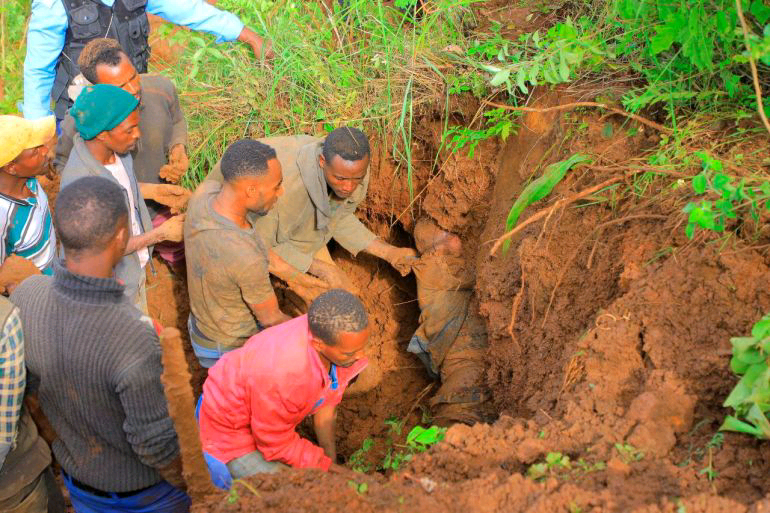By: Chioma Madonna Ndukwu
The United Nations reports that the death toll from recent landslides in Ethiopia’s Gofa zone has risen to 257, with the potential to reach 500.
The deadly landslides, triggered by heavy rains, have left more than 15,000 people in need of evacuation, including many children, pregnant women, and new mothers. Efforts to rescue victims were hampered as a second landslide struck those attempting to help, causing further casualties. The region’s saturated soil has heightened the risk of such disasters, following recent flooding that displaced thousands and damaged livelihoods.
This catastrophe has highlighted the broader humanitarian crisis in Ethiopia, where the dual impacts of climate change—drought and flooding—have left millions vulnerable to malnutrition and displacement. Authorities and international aid agencies are urgently coordinating efforts to provide immediate relief, while also planning long-term strategies to mitigate future disasters and support recovery. The tragedy underscores the critical need for enhanced disaster preparedness and climate resilience in the region.
The Ethiopian government, alongside global humanitarian organizations, is working to mobilize resources and coordinate rescue operations. However, the challenging terrain and ongoing adverse weather conditions have complicated these efforts. There are growing concerns about the spread of waterborne diseases due to contaminated water sources and inadequate sanitation facilities in the affected areas. The international community is being urged to provide additional support to address both the immediate and long-term needs of those affected, as Ethiopia faces one of its most severe humanitarian crises in recent years.


